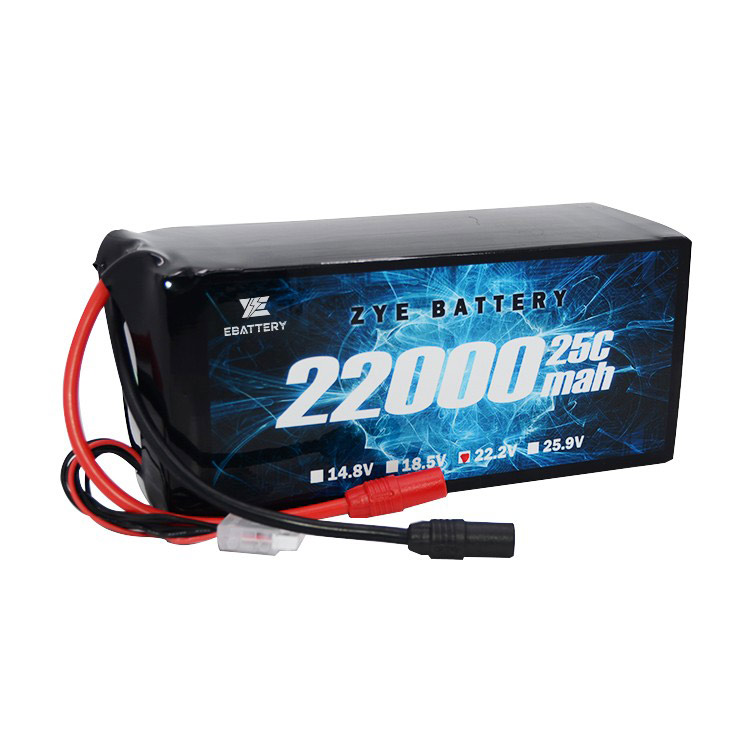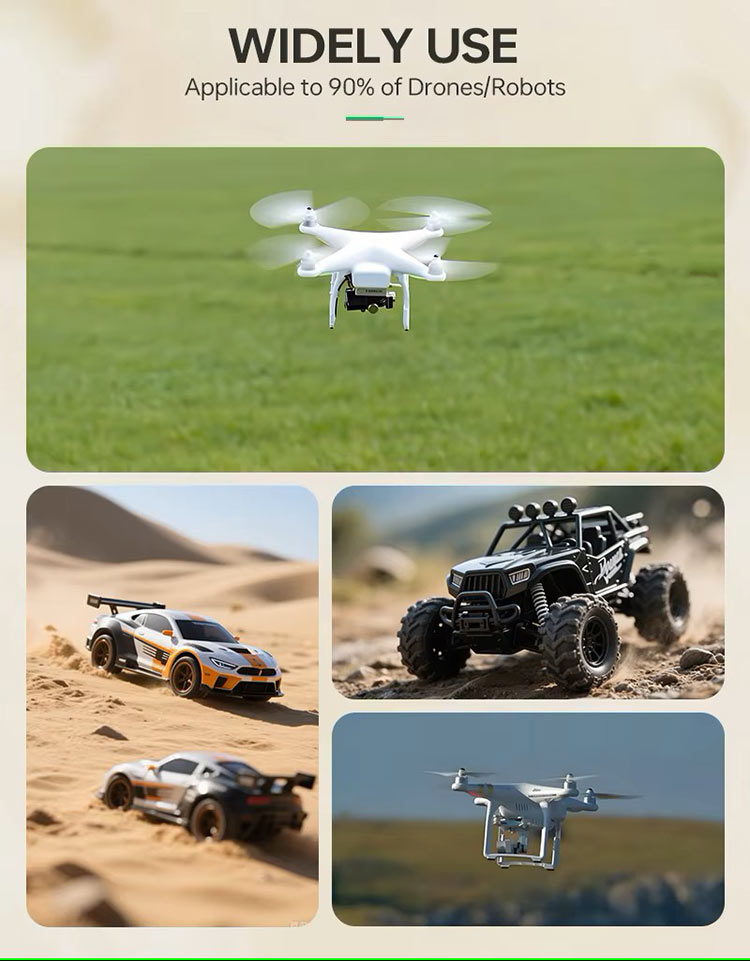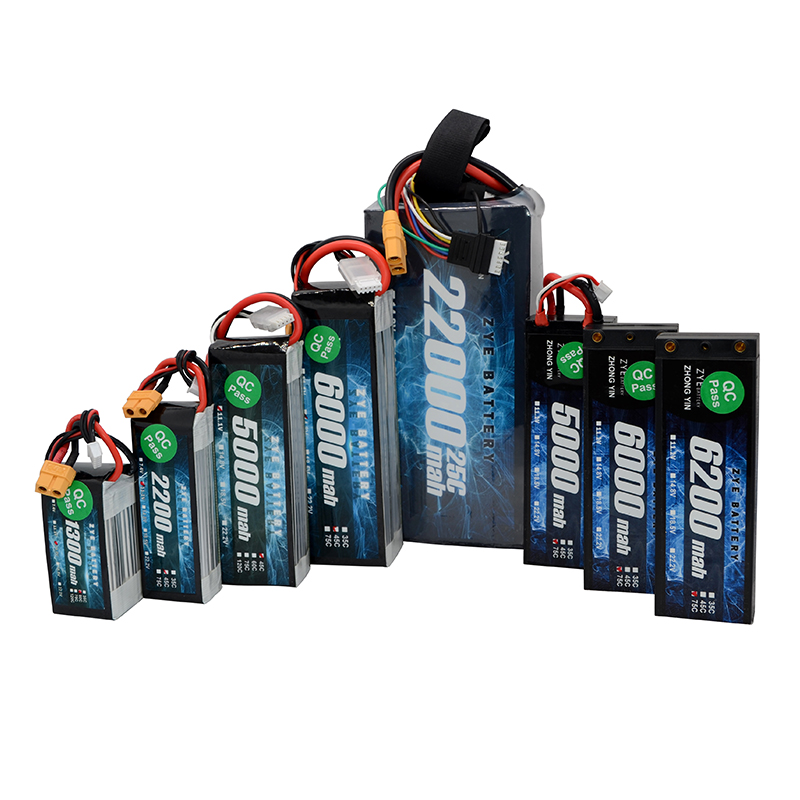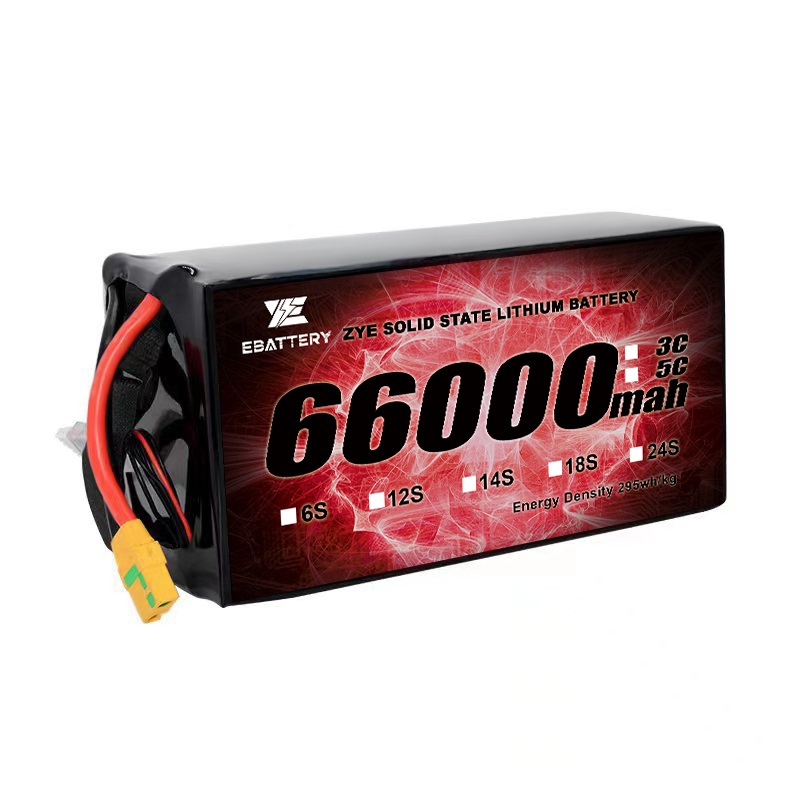How to Prevent Overcharging and Over-Discharging of Drone Batteries
2025-09-08
Drone batteries are a critical component of unmanned aerial vehicles, with their performance directly impacting flight safety and equipment lifespan. To ensure safe battery usage and prevent overcharging or over-discharging, mastering scientific operation and maintenance methods is key to avoiding these issues.

Core Hazards of Overcharging and Over-Discharging
Overcharging Hazards: When charging continues after the battery is fully charged, side reactions occur inside the cells. Gas production causes battery swelling, while electrolyte decomposition reduces battery capacity. In severe cases, excessively high voltage can rupture the cell separator, causing internal short circuits and posing a fire hazard.
Dangers of Over-Discharge: Forcing continued discharge after the battery is depleted (e.g., flying beyond the low-battery warning) causes cell voltage to drop below safe thresholds, damaging electrode structures. Chronic over-discharge induces “deep discharge sleep,” where even subsequent charging results in significant capacity loss or irreversible failure.
Preventing Overcharging: Controlling Critical Details During Charging
How to Charge Drone Batteries: The Correct Method
For drones using lithium polymer batteries, proper charging habits are crucial for battery health and longevity. Expert tips will guide you in charging drone batteries correctly.
Charging Safety
Use Dedicated Chargers: Always charge with the charger specifically designed for your drone's battery. Avoid using incompatible chargers that may cause overcharging or over-discharging.
Charging Environment: Ensure the charging area is dry and well-ventilated, avoiding direct sunlight and high temperatures. Never charge in enclosed spaces or vehicles to prevent fire or explosion.
Supervise Charging: Always have someone present during charging to address any potential abnormalities.
Inspect Battery Condition: Before charging, check the battery for integrity. Avoid using batteries with damage, leakage, deformation, or other issues.
Inspect battery condition before charging; discontinue use immediately if issues are found.
If the battery exhibits swelling, damaged casing, or oxidized connectors, charging risks may occur even with proper procedures. Before charging, carefully inspect the battery's appearance: press the surface—it should not dent or bulge; check connectors for rust or deformation. Only connect the charger if no abnormalities are present. If issues are detected, stop using the battery immediately and contact the manufacturer's after-sales service. Do not attempt to charge it.

Discharge Safety
Control Depth of Discharge: Avoid over-discharging the battery. It is recommended to land or return to base when the remaining charge is around 30%.
Discharge Rate: Avoid sudden increases in discharge rate to prevent damage to the battery.
Low-Temperature Operation: Battery discharge capacity decreases in cold conditions. Preheat the battery before use to ensure optimal performance.
After landing, if the remaining battery charge is below 20%, connect the charger within 1 hour to recharge (to at least 30% capacity) to prevent prolonged low-voltage storage.
For short-term storage, charge the battery to 40%-65% capacity. Store in a dry, well-ventilated environment at 10-25°C (50-77°F), away from heat sources and metal objects.
Daily Use and Storage
Handle with care: Avoid impacts or drops to prevent internal structural damage.
Storage Environment: Store batteries in a dry, well-ventilated, cool location, away from direct sunlight and high temperatures.
Storage Charge Level: For long-term storage, maintain the battery charge between 40% and 65% to prevent damage from overcharging or over-discharging.
Regular Inspection: Periodically check the battery's appearance and performance. Address any abnormalities promptly.
Preventive Measures
Avoid Short Circuits: Prevent direct contact between battery terminals or contact with other metal objects to avoid short circuits causing fire or explosion.
Avoid Crushing: Do not crush or subject batteries to heavy pressure to prevent damage to internal components.
Avoid Mixing: Do not mix batteries of different brands or models to prevent accidents.
Fire Prevention Measures: Maintain fire extinguishers and other fire safety equipment during charging and storage to address potential fire incidents.
Daily Maintenance: Bonus Steps to Extend Battery Life
Avoid Rough Handling: Refrain from dropping or crushing batteries. Do not store batteries with keys, coins, or other metal objects to prevent terminal short circuits.
Regular “Balance Charging”: After every 10 charge cycles, perform a “slow charge” (select the charger's “balance charge” mode or avoid fast charging) to ensure consistent charge levels across all cells. This prevents overcharging or over-discharging in specific cells due to voltage imbalances.
Promptly “Retire Aged Batteries”: Immediately cease use and replace batteries exhibiting symptoms like failure to charge, rapid power loss after charging, or swelling/deformation—even if cycle count limits haven't been reached. Never continue using “damaged batteries.”
Conclusion
The “health” of drone batteries fundamentally stems from “proper operation.” Avoiding overcharging and over-discharging requires no complex technology—simply select the correct charging equipment, control charging duration, strictly adhere to power thresholds during flight, and follow scientific storage methods. Cultivating good usage habits ensures flight safety, maximizes battery value, and reduces unnecessary equipment wear.
























































